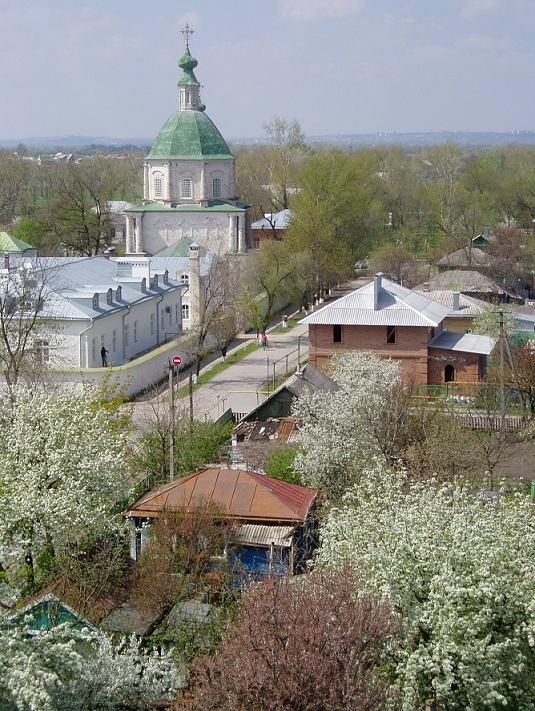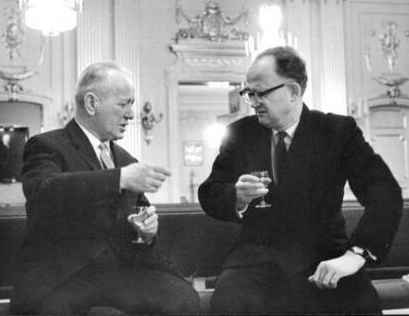|
Starocherkassk
Starocherkasskaya (russian: Старочерка́сская), formerly Cherkassk (), is a rural locality (a ''stanitsa'') in Aksaysky District of Rostov Oblast, Russia, with origins dating from the late 16th century. It is located on the right bank of the Don River approximately upstream from the major Russian port city of Rostov-on-Don. It is famous for having been the center of Don Cossack culture and politics for nearly two centuries as the capital of the Don Host Oblast. Due to regular spring floods that submerged the small city on several occasions, the Cossacks moved their capital to higher ground at Novocherkassk in 1805. In and around Starocherkasskaya there are over forty noteworthy historical and cultural sites including the Resurrection (Voskresensky) Cathedral, completed in 1719, and its famous gilded wooden iconostasis. History A Cossack fortress on the island of what was later called ''Monastyrsky'' on the Don river was probably built before 1570 although it is ... [...More Info...] [...Related Items...] OR: [Wikipedia] [Google] [Baidu] |
Resurrection Cathedral, Starocherkasskaya
The Military Cathedral of Christ's Resurrection (russian: Воскресенский войсковой собор) was built between 1706 and 1719 as the first stone church in the Lower Don region. It was the main Christian shrine of the Don Cossack Host in the 18th century.М. Астапенко. История донского казачества. Донской издательский дом, 1999. Стр. 240. It is situated in the stanitsa of Starocherkasskaya (the former city of Cherkassk), Rostov Oblast, Russia. History In 1650, during the siege of Azov, the defending Cossacks vowed to build a wooden cathedral on the square where the cossack leaders held assemblies. Because of frequent fires in Cherkassk (the former name of the town), the cathedral burned twice. The stone cathedral had been being built from 1706 to 1719. It was constructed in contrary with Peter I's decree banning the construction of stone buildings anywhere except for St. Petersburg. However, in view ... [...More Info...] [...Related Items...] OR: [Wikipedia] [Google] [Baidu] |
Transfiguration Church, Starocherkasskaya
The Transfiguration (Ratnaya) Church (russian: Преображенская (Ратная) церковь) ― one of the architectural landmarks of the stanitsa of Starocherkasskaya, Rostov Oblast, Russia. It is the first stone church in Starocherkassk ever built. This church was also the second oldest temple in the stanitsa. It was constructed on the site of the burnt wooden Church of St. Elijah by the same Moscow masters that built the bell tower of the Resurrection Cathedral. History The Transfiguration Church is situated next to military cemetery that was established in 17th-20th centuries. The second name of the church ― Ratnaya, is linked to Ratny tract, which had long been a place of Cossack armies' assemble. According to historical sources it is known that in 1673 in the hills just north to Cherkassk there was built a town with a population of about 6,000 people. The reason for establishment of the settlement was the alliance of Don Cossacks and Russia in their fight ... [...More Info...] [...Related Items...] OR: [Wikipedia] [Google] [Baidu] |
Aksaysky District
Aksaysky District, or Aksay Region (russian: Акса́йский райо́н) is an administrativeLaw #340-ZS and municipalLaw #240-ZS district (raion), one of the forty-three in Rostov Oblast, Russia. It is located in the western central part of the oblast. The area of the district is . Its administrative center is the town of Aksay. Population: 102,369 ( 2010 Census); The population of Aksay accounts for 41.0% of the district's total population. Economy Transportation Platov International Airport, which will serve Rostov-on-Don Rostov-on-Don ( rus, Ростов-на-Дону, r=Rostov-na-Donu, p=rɐˈstof nə dɐˈnu) is a port city and the administrative centre of Rostov Oblast and the Southern Federal District of Russia. It lies in the southeastern part of the East Eu ..., located at the stanitsa of Grushevskaya, which has commenced all services on 7 December 2017. References Notes Sources * * {{Use mdy dates, date=October 2012 Districts of Rostov Oblast ... [...More Info...] [...Related Items...] OR: [Wikipedia] [Google] [Baidu] |
Matvei Platov
Count Matvei Ivanovich Platov (8 (19) August 1753 – 3 (15) January 1818) was a Russian general who commanded the Don Cossacks in the Napoleonic wars and founded Novocherkassk as the new capital of the Don Host Province. Biography Platov was born in Pribilyanskoe and began his service in the Don Cossacks in 1766 becoming an yesaul in 1769. He distinguished himself in the 1771 Crimean campaign and was promoted to the command of a Cossack regiment in 1772. Between 1774 and 1784 he fought against the Crimean Tatars, in 1774 and again in 1782 serving under Alexander Suvorov in the Kuban Valley, Chechnya and Dagestan.p.304, Mikaberidze In 1790 he was awarded the Order of St George (4th Class) for his participation in the capture of Ochakov, and after actions in Akkerman, Bender, and Kaushani for which he was promoted to brigadier general, he was awarded the Order of St George (3rd Class) for the storming of Izmail. For his bravery during the assault he was promoted to ataman o ... [...More Info...] [...Related Items...] OR: [Wikipedia] [Google] [Baidu] |
Kondraty Bulavin
The Bulavin Rebellion or Astrakhan Revolt (; Восстание Булавина, ''Vosstaniye Bulavina'') was a war which took place in the years 1707 and 1708 between the Don Cossacks and the Tsardom of Russia. Kondraty Bulavin, a democratically elected Ataman of the Don Cossacks, led the Cossack rebels. The conflict was triggered by a number of underlying tensions between the Moscow government under Peter I of Russia, the Cossacks, and Russian peasants fleeing from serfdom in Russia to gain freedom in the autonomous Don area. It started with the 1707 assassination of Prince , the leader of Imperial army's punitive expedition to the Don area, by Don Cossacks under Bulavin's command. The end of the rebellion came with Bulavin's death in 1708. Underlying causes A number of social grievances were prevalent in the peasant population of Russia in the years leading up to the Bulavin Rebellion. Peter the Great's radical reforms designed to "Westernize" old Muscovy in the 18th ... [...More Info...] [...Related Items...] OR: [Wikipedia] [Google] [Baidu] |
Novocherkassk
Novocherkassk (russian: Новочерка́сск, lit. ''New Cherkassk'') is a city in Rostov Oblast, Russia, located near the confluence of the Tuzlov and Aksay Rivers, the latter a distributary of the Don River. Novocherkassk is best known as the cultural capital of the Cossacks, and as the official capital of the Don Cossacks. Population: 168,746 ( 2010 Census); 170,822 ( 2002 Census); 178,000 (1974); 95,453 (1959); 75,917 (1939); 51,963 (1897). History Imperial era Foundation Although the first settlement in the region was founded by Temroqwa Idar,Khasht, Ali. ''Circassian Prince Temroqwa Idar.'' the city of Novocherkassk was founded in 1805 by Lieutenant-general Matvei Platov, the Ataman of the Don Cossacks, as the administrative center of the Don Host Oblast. It was established in reaction to the original administrative center, the ''stanitsa'' of Cherkassk, being deemed unsuitable as the capital for the Don Cossacks for several reasons. Cherkassk was repeatedly flooded ... [...More Info...] [...Related Items...] OR: [Wikipedia] [Google] [Baidu] |
Don Voisko Province
The Province (Oblast) of the Don Cossack Host (, ''Oblast’ Voyska Donskogo'') of Imperial Russia was the official name of the territory of Don Cossacks, coinciding approximately with the present-day Rostov Oblast of Russia. Its site of administration was Cherkassk, relocated later to Novocherkassk. The province comprised the areas where the Don Cossack Host settled in the Russian Empire. From 1786 the territory was officially named the Lands of the Host of the Don (), renamed Don Host Province in 1870. During 1913, the oblast, with an area of about 165,000 km², had about 3.8 million inhabitants. Of these, 55% (2.1 million) were Cossacks in possession of all the land; the remaining 45% of the population being townsfolk and agricultural guest labourers from other parts of Russia. This subdivision was abolished in 1920; from the major part of it the Don Oblast of the RSFSR was created, which was incorporated into the North Caucasus Krai North Caucasus Krai (russian: ... [...More Info...] [...Related Items...] OR: [Wikipedia] [Google] [Baidu] |
Michail Aleksandrovich Sholokhov
Mikhail Aleksandrovich Sholokhov ( rus, Михаил Александрович Шолохов, p=ˈʂoləxəf; – 21 February 1984) was a Russian novelist and winner of the 1965 Nobel Prize in Literature. He is known for writing about life and fate of Don Cossacks during the Russian Revolution, the civil war and the period of collectivization, primarily in his most famous novel, ''And Quiet Flows the Don''. Life and work Sholokhov was born in Russia, in the "land of the Cossacks" – the Kruzhilin hamlet, part of stanitsa Vyoshenskaya, in the former Administrative Region of the Don Cossack Host. His father, a Russian, Aleksander Mikhailovich Sholokhov (1865–1925), was a member of the lower middle class, at different times a farmer, a cattle trader, and a miller. Sholokhov's mother, Anastasia Danilovna Chernikova (1871–1942), the widow of a Cossack, came from Ukrainian peasant stock (her father was a peasant in the Chernihiv oblast). She did not become literate until a po ... [...More Info...] [...Related Items...] OR: [Wikipedia] [Google] [Baidu] |
Ataman
Ataman (variants: ''otaman'', ''wataman'', ''vataman''; Russian: атаман, uk, отаман) was a title of Cossack and haidamak leaders of various kinds. In the Russian Empire, the term was the official title of the supreme military commanders of the Cossack armies. The Ukrainian version of the same word is ''hetman''. ''Otaman'' in Ukrainian Cossack forces was a position of a lower rank. Etymology The etymologies of the words ''ataman'' and ''hetman'' are disputed. There may be several independent Germanic and Turkic origins for seemingly cognate forms of the words, all referring to the same concept. The ''hetman'' form cognates with German ''Hauptmann'' ('captain', literally 'head-man') by the way of Czech or Polish, like several other titles. The Russian term ''ataman'' is probably connected to Old East Slavic ''vatamanŭ,'' and cognates with Turkic ''odoman'' (Ottoman Turks). The term ''ataman'' may had also a lingual interaction with Polish ''hetman'' and German ''h ... [...More Info...] [...Related Items...] OR: [Wikipedia] [Google] [Baidu] |
Crimean Khanate
The Crimean Khanate ( crh, , or ), officially the Great Horde and Desht-i Kipchak () and in old European historiography and geography known as Little Tartary ( la, Tartaria Minor), was a Crimean Tatars, Crimean Tatar state existing from 1441 to 1783, the longest-lived of the Turkic khanates that succeeded the empire of the Golden Horde. Established by Hacı I Giray in 1441, it was regarded as the direct heir to the Golden Horde and to Cumania, Desht-i-Kipchak. In 1783, violating the 1774 Treaty of Küçük Kaynarca (which had guaranteed non-interference of both Russia and the Ottoman Empire in the affairs of the Crimean Khanate), the Russian Empire Annexation of Crimea by the Russian Empire, annexed the khanate. Among the European powers, only France came out with an open protest against this act, due to the longstanding Franco-Ottoman alliance. Naming and geography Crimean khans, considering their state as the heir and legal successor of the Golden Horde and Desht-i Kipchak, ... [...More Info...] [...Related Items...] OR: [Wikipedia] [Google] [Baidu] |




